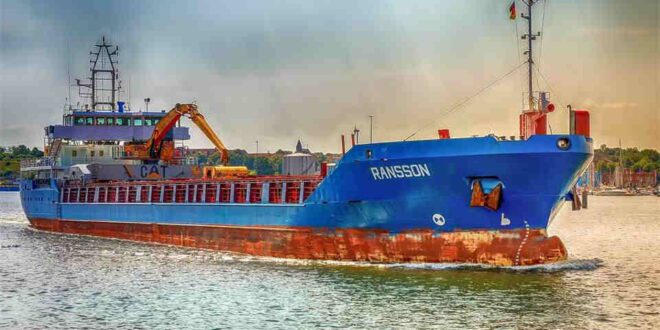The maritime industry relies heavily on efficiency, safety, and technological innovation to move goods and people across the globe. At the heart of marine propulsion lies one of the most fundamental yet complex engineering components: the propeller.
Far from being a simple rotating blade, propeller design is a highly specialized field that integrates hydrodynamics, materials science, and environmental considerations. The quality of a vessel’s propeller directly influences fuel consumption, noise and vibration levels, maneuverability, and compliance with international regulations.
From massive container ships to small luxury yachts, tailored propeller solutions are vital to achieving performance goals. This article explores the diverse applications of propeller design across different sectors, highlighting its role in commercial shipping, passenger transport, naval operations, leisure craft, offshore industries, and sustainable maritime solutions.
Propeller Design in Commercial Shipping
Global trade depends on cargo ships, tankers, and container vessels that transport millions of tons of goods annually. For this sector, propeller design is primarily about efficiency and reliability.
A container ship operating long distances must minimize fuel consumption to remain competitive. Even a small increase in propeller efficiency—say, 2–3%—can translate into millions of dollars saved annually. Designers achieve this through customized blade geometry, careful selection of materials, and optimization for specific speed ranges.
Commercial vessels also demand durability. Propellers often face harsh conditions, including corrosion, cavitation, and wear from prolonged operations. A well-engineered propeller can extend maintenance intervals, reduce downtime, and lower operational costs.
Additionally, shipping companies must comply with International Maritime Organization (IMO) targets to reduce carbon emissions. Modern propeller design incorporates energy-saving devices such as ducted propellers and winglets that improve flow around the blades, further reducing resistance and energy consumption.
Passenger Vessels: Comfort and Efficiency
Passenger ships, such as cruise liners and ferries, place unique demands on propeller design. Beyond efficiency, these vessels prioritize comfort and noise reduction. Vibrations caused by poorly designed propellers can compromise passenger experience and even affect crew health.
Designers use advanced hydrodynamic modeling, including Computational Fluid Dynamics (CFD), to minimize cavitation—the formation and collapse of vapor bubbles on the propeller’s surface. Cavitation not only reduces efficiency but also creates noise and vibration. By optimizing blade thickness, pitch, and shape, engineers achieve smoother and quieter operation.
Ferries, which often operate in environmentally sensitive areas, benefit from propellers designed to reduce emissions and comply with strict port regulations. Cruise ships, on the other hand, need propellers that balance efficiency with the ability to maneuver safely in confined spaces such as harbors.
Specialized Propeller Design for Military and Research Vessels
In naval and research applications, propeller design must address stealth, precision, and reliability.
For submarines, noise reduction is not just a comfort issue but a matter of survival. Specialized propeller designs, including skewback propellers with highly curved blades, help reduce acoustic signatures. This makes detection by sonar more difficult, providing a tactical advantage.
Surface naval ships also benefit from custom designs that maximize speed, endurance, and maneuverability under diverse conditions. Durability is especially critical in military contexts, where vessels must operate in extreme environments without frequent maintenance.
Research vessels, such as those used for oceanographic studies, rely on propellers designed for precise station-keeping. When collecting samples or deploying underwater equipment, maintaining exact positioning is crucial. Specialized controllable-pitch propellers (CPPs) allow fine adjustments to thrust, making this possible.
Yachts and Leisure Craft Applications
The leisure boating sector emphasizes performance, aesthetics, and comfort. Here, propeller design must cater to diverse needs ranging from speedboats to luxury superyachts.
For high-performance speedboats, designers focus on maximizing thrust and top speed. Lightweight materials such as aluminum or advanced composites are common, ensuring both strength and responsiveness. Propeller blade geometry is carefully tuned to deliver quick acceleration while minimizing drag.
Luxury yachts require a different approach. Owners expect smooth, quiet cruising with minimal vibration. Propeller designers often integrate solutions like five- or six-blade propellers that operate at lower speeds but deliver greater smoothness. In addition, finishes such as highly polished surfaces reduce resistance and cavitation.
Custom propeller design also plays a role in the aesthetics of leisure craft. Many owners invest in tailor-made solutions that combine engineering precision with a sense of exclusivity, making the propeller part of the yacht’s identity.
Industrial and Offshore Applications
Beyond transport and leisure, propeller design plays a central role in offshore industries such as oil, gas, and renewable energy. Support vessels, tugboats, and offshore supply ships all depend on reliable propulsion systems capable of operating in challenging environments.
Tugboats, for example, require massive torque for maneuvering large vessels in ports. Here, propellers are often paired with nozzles that direct water flow, enhancing thrust at low speeds. Offshore supply vessels, which transport equipment to oil platforms, rely on propellers that combine endurance with maneuverability.
In offshore wind farms, maintenance vessels need precise positioning capabilities. Dynamic positioning systems, which use controllable-pitch propellers in coordination with thrusters, allow vessels to remain stable even in rough seas. This precision is essential for safe installation and servicing of wind turbines.
Sustainability and Green Applications of Propeller Design
As environmental concerns reshape the maritime sector, propeller design is central to achieving greener shipping practices.
One of the most pressing issues is reducing fuel consumption and CO₂ emissions. Studies show that optimized propeller designs can improve efficiency by up to 10%, making a significant contribution to sustainability goals. For example, energy-efficient propellers reduce drag and improve water flow, cutting fuel use on every voyage.
Hybrid and electric propulsion systems also benefit from advanced propeller design. These systems often operate at variable speeds, requiring propellers that maintain efficiency across a wider range of conditions. Designers are experimenting with lightweight materials and biomimetic shapes inspired by marine life to further reduce environmental impact.
Compliance with IMO 2030 and 2050 emissions targets drives innovation in this field. Propeller design is not just about propulsion anymore—it is about future-proofing vessels against stricter regulations and aligning with global sustainability initiatives.
Future Trends in Propeller Design
Looking ahead, propeller design is evolving alongside advances in digital engineering and green technology.
- Smart Propellers: Integrated sensors and real-time monitoring will allow operators to adjust propeller performance on the fly, optimizing efficiency under changing conditions.
- Additive Manufacturing: 3D printing enables rapid prototyping and the production of complex shapes previously impossible with traditional manufacturing.
- Bio-Inspired Design: Researchers are studying the swimming mechanisms of fish and whales to create propellers that mimic natural efficiency.
- Integration with Alternative Fuels: As vessels adopt hydrogen, ammonia, or LNG propulsion, propellers must adapt to different performance profiles.
These innovations point toward a future where propeller design not only supports efficiency but also becomes a cornerstone of sustainable and intelligent marine transportation.
Conclusion
Propeller design is far more than a technical detail—it is a defining factor in the success and sustainability of maritime operations. From massive container ships to small leisure yachts, from stealth submarines to offshore wind farm vessels, the uses of advanced propeller engineering are diverse and vital.
As the maritime industry continues to evolve, the demand for tailored, efficient, and environmentally responsible propellers will only grow. By combining hydrodynamic expertise with modern digital tools and sustainable practices, designers are shaping the next generation of marine propulsion.
Ultimately, the future of maritime mobility depends on innovation in propeller design, ensuring safer, greener, and more efficient seas for decades to come.
 khamush.com Lifestyle | Motivation | Poems
khamush.com Lifestyle | Motivation | Poems



